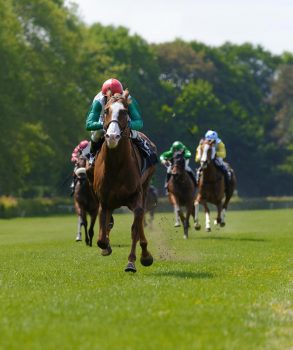31 May 2017
A Horserace Betting Levy Board and Racing Foundation-funded study on equine lameness led by an RVC expert is to be published in the <em>Equine Veterinary Journal</em>.

Racing horses.
A study on equine lameness led by an RVC expert on bio-engineering is to be published in the Equine Veterinary Journal.

Senior lecturer in bio-engineering Thilo Pfau collaborated with researchers and vets from Singapore Turf Club and the University of Agricultural Sciences in Uppsala, Sweden for the Horserace Betting Levy Board and Racing Foundation-funded study.
The study and paper relates to the use of a new parameter – withers movement – which is consistent with the “rule of sides” vets use in lameness examinations to determine whether a lameness comes from the front or hindquarters of a horse.
This parameter – which is extremely difficult to perceive by eye, but can be measured with technical aids – appears to be a good indicator of this rule, and can help vets pinpoint the location of lameness more quickly, making assessment easier for horses.
While two commonly used signs – the head nod and the hip hike – allow vets to identify the existence and severity of a lameness, some horses may show both, or what is called a “referred” or “compensatory” lameness.
The latter happens when a horse experiences pain in one of its hind limbs and shows an adaptation to its hindquarter movement (a hip hike), trying to offload force production to one of the front limbs, then also showing a head nod.
This complicates the search for the underlying reason of the lameness, since horses – unlike humans – cannot direct the vet through verbal communication. However, conclusions can be drawn from clues given by the movement patterns of the horse. According to researchers, this study makes that detection process much easier.
Racehorses at Singapore Turf Club were used in the study, along with gait analysis techniques pioneered by researchers at the RVC’s Equine Referral Hospital and Structure and Motion Laboratory.
The work is part of an ongoing collaborative effort with the University of Uppsala that hopes to provide robust and practically relevant evidence to support clinical decision making, with special emphasis on detection and grading of lameness in the horse.